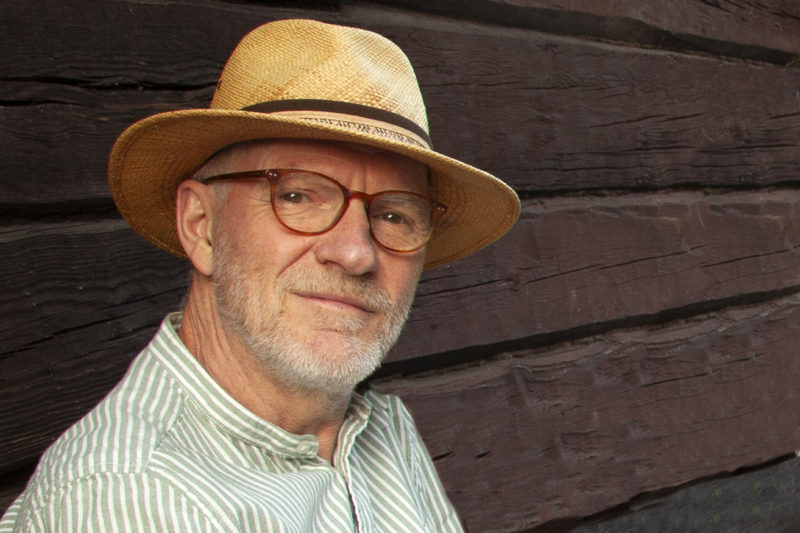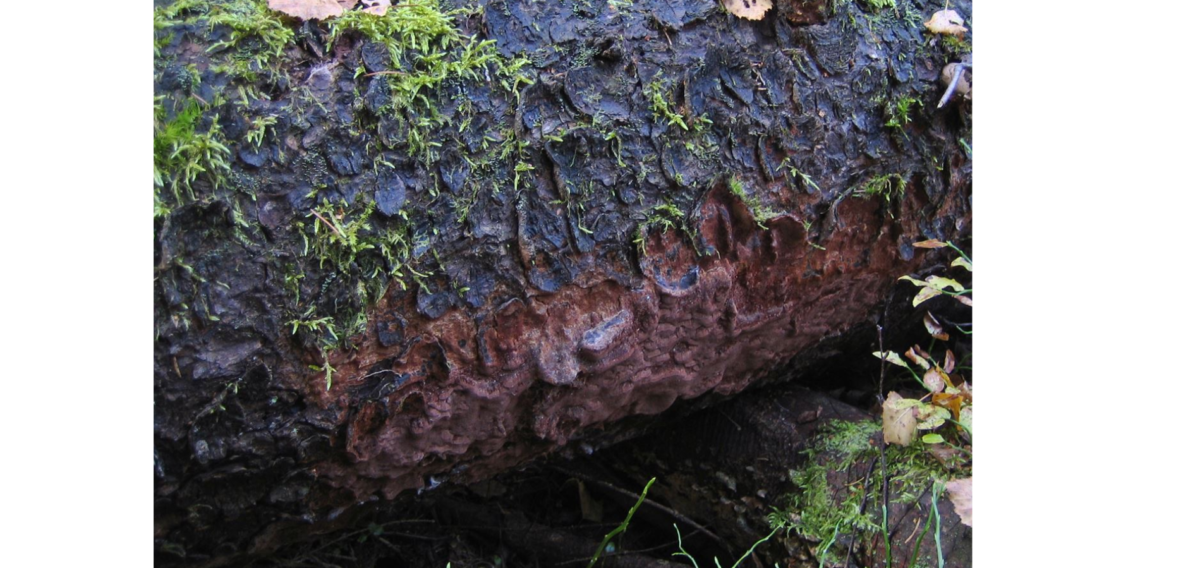Targeted tools needed to protect threatened species – Red List provides assistance

Five percent of forest area host fifty percent of the threatened forest species. A new analysis of the Finnish Red List reveals the forest types whose protection would bring the greatest benefit.
The Red List, compiled according to criteria set by the International Union for Conservation of Nature (IUCN), is best known as the list of threatened species, though above all, it is an important tool in planning the protection of biodiversity.
The Finnish Red List has been studied by Petri Heinonen, who says that using the information in it could improve the targeting of nature protection measures. Heinonen has a long experience as an environmental expert in the forest sector, and his analysis of the Finnish Red List was published today.
The most recent assessment of threatened species in Finland was published in 2019. The Finnish Ministry of the Environment has commissioned similar assessments since 1985, and the series is probably the most comprehensive and longest-term assessment of threatenedness in the world.
However, Heinonen considers that the messages of the Red List are not sufficiently taken into account when planning protection, and even less in public debate. A good example of this is the choice of what to protect. According to Heinonen, most protection sites in Finland are located in heath forests, and proposals for new sites most often represent this forest type.

’But in actual fact, the problem of threatenedness is much greater on rock outcrops and treeless fell tops, as well as in traditional agricultural biotopes. As for forests, the problem is greatest in herb-rich forests and on eskers. These are home to half of the threatened forest species, though their share of forest area is only about five percent,’ says Heinonen.
Protection of herb-rich forests and eskers requires nature management
Over 40 percent of threatened forest species are found in herb-rich forests, whose share of the forest area is only around two percent. Similarly, eskers and other hot and sunny forest areas host a great number of threatened species, despite being small in size.
This is why threatened species in herb-rich forests, eskers and traditional agricultural environments would merit more attention, says Heinonen, though setting up protection sites should not be the only measure.
’Ensuring the vitality of species in these areas requires active measures. If you leave a herb-rich forest to fend for itself, spruce will gain the upper hand and other, typical species will suffer. Species on eskers require wildfires to reduce shade and awaken the seed bank in the soil. The same effect can be achieved by heavy soil manipulation and reducing the canopy cover,’ Heinonen says.
The biodiversity of traditional agricultural biotopes can also be maintained only by management, as they will otherwise be gradually overgrown. The most difficult case are species found on open fells, since the only effective way to protect them is to stop global warming.

Lots of forests mean lots of threatened forest species
In general, the problem of threatened species in Finnish nature is getting increasingly worse. This is a frequent topic of discussion, and rightly so, in Heinonen’s opinion.
’Still, people always use forests as an example, even though the share of threatened forest species out of all species assessed has gone down with every new assessment,’ Heinonen points out.
Three quarters of Finland’s land area are covered by forests. The share of all forest species of the species assessed in the Red List is 50 percent, but the share of threatened forest species is less than that: 38 percent.
Across all biotopes, the ratio of threatened species to the total area is actually the best in forests. It is true that the absolute number of threatened species is the highest in forests, but researchers explain this by saying that the overall number of species is the highest in forests because forests are so plentiful in Finland.
Causes of threatenedness do not correspond to development seen in forests
The Red List also discusses the causes of threatenedness and the possible risks for various species. According to Heinonen, these do not correspond to what takes place in Finnish forests in the light of, for example, the National Forest Inventory (NFI).
According to the Red List, 40 percent of the threatened species are threatened by the decreasing of old forests and large trees, and 32 percent by the decrease of decaying wood. According to data in the NFI, however, old forests have not deceased in Southern Finland; in contrast, structurally the forests in this part of the country have grown older for at least the past hundred years. In the north of Finland, old forests have grown scarcer since WW2.
The area considered as Southern Finland in these estimates is roughly the area south of the Oulujoki river.

Then again, large trees have not grown scarcer; their number has actually multiplied since the 1920s. The number of aged trees has remained the same since the 1970s.
The volume of decaying wood in Southern Finland remained relatively constant for long, but since the turn of the millennium its volume per hectare has more than doubled. In Northern Finland the volume of decaying wood did decrease for some years, but by now the trend has been reversed, and the volume is many times that in Southern Finland.
The Finnish Forest Research Institute, a predecessor of Natural Resources Institute Finland,began estimating the volumes of deadwood usable as firewood in the 1930s. The volumes decreased up to the 1970s and 1980s, after which they began to increase: in Southern Finland, the volume is now twice that in the 1930s, and in Northern Finland, slightly less than in the 1030s, though still higher than in the south.
A oft-cited cause of threatenedness is the decrease of broadleaved trees, despite the fact that their number has actually increased.
Heinonen considers that future assessments of threatenedness should study the factors that have helped maintain the range of species in Southern Finland even in the period when the quantities of decaying wood, large trees and broadleaves were smaller than today.
Total area of clear fellings has not increased in 50 years
According to Heinonen, the Red List does not contain a detailed description of how the causes of threatenedness and the risk factors have been determined. He says, moreover, that some of them are described in such general terms that it is impossible to conclude how the range of species could be re-diversified.
The list of causes and risk factors has not changed since 1985. Heinonen thinks it should be reassessed.
A cause of threatenedness often brought up in public debate are increased fellings. It is true that fellings have increased as regards the volumes of timber felled. However, what is more important for biodiversity is the size of the areas felled.
If we look at regeneration fellings, which are considered to be the most harmful for biodiversity, their area has not increased consistently for at least 50 years.
’The total areas felled vary from one year to the next, but if we look at regeneration fellings, which are considered to be the most harmful for biodiversity, their area has not increased consistently for at least 50 years,’ says Heinonen.
This apparent conflict is explained by the fact that the number of trees in Finnish forests has increased by almost 70 percent during that same 50 years.
’Especially as regards regeneration fellings, the average net volume of timber per hectare has increased in the same proportion,’ says Heinonen.
To be credible, responses must be understandable
In Heinonen’s opinion, the conflict between the assessments of threatenedness of species and that of biotopes is particularly glaring.
’According to the publication Threatened Habitat Types in Finland 2018, almost 90 percent of habitat types in heath forests are threatened, but of species primarily living in heath forests, only six percent are threatened,’ says Heinonen.
A habitat type classified as threatened is in danger of disappearing.
’How should one understand the information that almost all habitat types in heath forests are threatened by disappearance, but only one in twenty species living there is similarly threatened,’ Heinonen wonders.
Heinonen considers both the Red List of Finland and the enormous effort it has required to be valuable in themselves, but in addition, the book is important because crucial aspects of life in Finland depend on the well-being of nature and forests.
’The gap between the content of the Red List and actual development is increasing continuously. If we want to maintain the high appreciation enjoyed by the Red List and its underlying credibility, questions arising out of its content should receive replies that can be understood,’ Heinonen says.
’We also need researchers to determine the primary targets of resource use and measures of protection, both of which can only be limited, to ensure maximum benefit with minimum expenditure,’ Heinonen concludes.